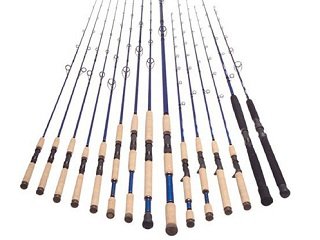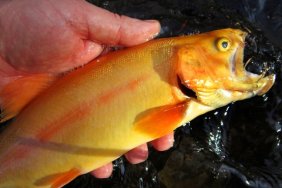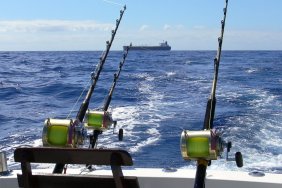 Today brings us to the last stop in my series on the main components of fishing rods. Throughout the first two parts of the series, I highlighted the varying types of blanks and guides found among the different rods in today’s market, including their benefits and effects of performance. Part Three is where I’ll showcase rod handles, or grips, which are an integral part of matching up a fisherman to a potential purchase, and come in a variety of shapes, sizes, and materials.
Today brings us to the last stop in my series on the main components of fishing rods. Throughout the first two parts of the series, I highlighted the varying types of blanks and guides found among the different rods in today’s market, including their benefits and effects of performance. Part Three is where I’ll showcase rod handles, or grips, which are an integral part of matching up a fisherman to a potential purchase, and come in a variety of shapes, sizes, and materials.
Throughout the years, several companies have made subtle modifications to the grips on their fishing rods, in order to capitalize on ergonomics and function on the water. Some features are exclusive to specific manufacturers, while others are pioneering elements possessed by ambitious products.
The two main grip materials on the market today are cork and foam. Cork grips tend to be lighter than foam ones, and also maintain residual heat in cooler temperatures. Also, cork handles transmit vibrations better and are less slippery when wet. The drawbacks to cork handles are that lower quality cork cracks easily, or contains cracks already. Furthermore, cork is less durable and has less longevity than foam, and is very hard to keep clean. Foam handles are generally much less expensive than cork, but they’re also much more durable. Where a cork handle might dent or even chip when mistreated, a foam handle remains strong. Handles made of foam don’t transmit vibrations as well as cork ones, however, and are also heavier.
Shape plays a big role in grip performance, especially when it comes to specific techniques, and to accommodate this, there are a few different designs available. The three main styles found in today’s rods are the through handle, the split-grip, and the power hump. Through handles are commonly found in many rods and don’t have much of an impact on performance. Split grip handles reduce the weight of a rod significantly and also add more direct contact to the rod blank, which helps anglers feel subtle vibrations much easier. Split grip handles can alter the balance of your entire setup, however, due to the reduced weight. When paired with your trusted reel, the weight may shift and might require you to add counter weights to the butt. Power hump grips are less common, and are designed to maximize the performance of crankbait fishing, which means they’re exclusive to trigger rods. By increasing the size of the handle at the part closest to the reel, they give you a fuller grasp and allow you to cast stronger and more effectively.
Other features that might be found in rod handles include a floating reel seat, contoured grooves for finger placement, and an extendable handle on some split grip models. As I stated earlier, the differences in rod grips are designed for specific purposes and can greatly increase performance when paired with the right tactic. However, the most important thing is actually holding a rod in the store and matching it to your natural grip. Fishing rods are meant to feel like an extension of your arm, so finding that marriage between performance and natural feel is integral. I hope you found my series on fishing rods to be informative and helpful, in terms of the differences in rod components, and I wish you luck on all future rod purchases.








